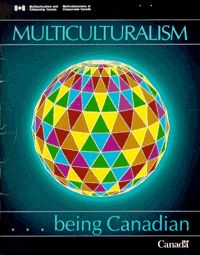Your blogger at a town called Niragaga or something.
There's supposed to be a waterfall here, but never
could find it.
One more posting about What I Saw in Ontario, and then my latent merciful qualities will kick in and there will be no more concerning the recent visit. Even this entry has no specific subject -- it's just an unorganized series of perceptions, almost certainly including some that are wrong. Observing an unfamiliar place is registering narrow slices, like an MRI scanner. (True of familiar places as well, but the slices add up to a bigger picture, also like a series of MRI images.)
Southern Ontario is the economic heartland of Canada, so it is one of the more developed areas. It hardly looks different from the United States -- the high-rise buildings, shopping malls, restaurants, and many of the retail shops will be familiar to Yanks. It's not the place to go for an exotic vacation (and we understood that beforehand, so it was no disappointment).
Most of my human encounters involved people in the tourist trade, who had a commercial motive for being agreeable; still, it seemed genuine. Almost everyone was polite, and some friendly. Many Canadians dislike the U.S. and Americans, but in no case did it spill out into rudeness. This civility is Canada's most appealing quality for me.
Restaurant meals were good at their respective price points.
Toronto is full of gleaming new skyscrapers, but thanks to an online acquaintance who lives there, I had a list of historic buildings remaining downtown. They are dwarfed by the modern construction and you probably would miss most of them without guidance, but these remnants of the early city (called, incidentally, York in the old days) escaped the wrecker's ball and seem now to be restored and esteemed. My wife and I had a drink in the lounge at the Royal York Hotel, a well-preserved 1920s structure where I stayed the only previous time I was in town, for a conference.
The hotel I booked for this visit was "uptown," in the Yorkville area near the Royal Ontario Museum. Yorkville is cool and fashionable, seemingly inhabited and visited by bourgeois bohemians. A pleasant but not distinctive part of town -- why do people who have money to blow insist on shopping and looking just like those of the same social stratum everywhere? You'd think wealth would give them the freedom to be different. But despite paying over the odds for clothing, massages, hip bars, etc., they are more conformist than ordinary people.

Nothing can diminish the majesty of Niagara Falls; everyone should make an effort to see it at least once. But the commercial district in the town of Niagara Falls, Canada, is appalling. (Niagara Falls on the U.S. side, which we didn't visit, might be worse -- no, couldn't be worse.) Trashy stores and "attractions" line Clifton Hill Road, pounding out loud pop music and carnival-like recorded pitches to come in and come out with lighter pockets, which plebs by the thousands seem happy to do. The vulgarity of the scene is enough to convince you, if you're not already, that there is zero hope for civilization.
The city or the provincial government or whoever is responsible for zoning has obviously decided that the falls are a cash cow that must be exploited to the full. In pursuit of sales and hotel tax revenue, they have turned the surroundings into a playpen for juveniles of all ages. We can only hope that someday good taste will level almost everything on Clifton Hill Road and nearby streets.
Although the city of Niagara Falls is a magnet for the dregs of two nations (not to mention from every continent), a few miles away is Niagara-on-the-Lake, which draws the carriage trade. It's beautifully landscaped, the old houses and stores preserved and restored. Restful for the eyes, but almost as crowded as Niagara Falls in season.
The Queen Elizabeth Way follows the Lake Ontario shore between Toronto and Niagara Falls. Thanks to industrial and office development, the lake is obscured for much of the distance. However, the lovely town of Burlington -- about 20 miles from Niagara on the western curve of the lake -- is less pretentious and "twee" than Niagara-on-the-Lake but as attractive in its way. Among its pleasures are several lakeside parks, in addition to the one right downtown.
We had a park almost to ourselves. It was the former grounds of the mansion (still standing) of a captain of industry, who could look across the lake to Hamilton and admire his steelworks. But the immediate surroundings were peace itself. Black squirrels cavorted, ducks (one followed by three cute ducklings) glided over an inlet from Lake Ontario, swans arched and dipped their periscope necks. Sun reflections created a shifting meshwork of light on the water's surface.

Road signage is terrible. Canada is globalized but the highway department hasn't caught on; they still assume it's the local traffic of 50 years ago. Don't go without a good map (which you'll have to buy; even the tourist offices just give you booklets that show you where the businesses are). The highways are shy even about telling you which one you're on, let alone what's up ahead and where you need to turn to get to, say, the Toronto Pearson Airport. The only exception is pointers to tourist sites, including wineries (I had no idea there were so many in Ontario). Why do tourism bureaus spent millions of dollars advertising in magazines and on TV to lure visitors, and then can't be bothered to help them find their way around? Penny wise, pound foolish.
Speaking of money, just about everything is eye-wateringly expensive, mainly because of taxes: as best I could calculate, about 15 percent on everything, plus an add-on at major tourist destinations. Filling three-quarters of the gas tank of the rental car (a mid-size Chevy Cruze) before returning it cost CDN$75 (a buck or two cheaper in U.S. money). I hope Canadians appreciate how much I contributed to funding their "free" medical care. Maybe that's one reason they were friendly.
























